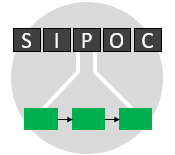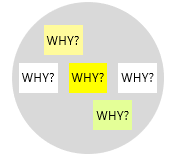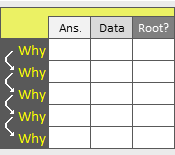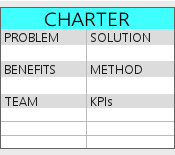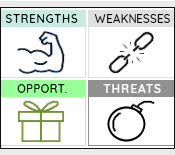
Also known as The Kipling Method, Five Ws and One H, Five Ws and How, 5Ws and 1H, and 5W&H.
Variants include 5W2H, Five Ws, 6W1H and 6H.
5W1H is a problem-solving approach that helps in obtaining fundamental information about a given problem or situation. This type of checklist is designed to guide the gathering of information and understanding of any current state using six key words, each starting with either ‘W’ or ‘H’. The elements of the 5W1H approach include questioning What, Who, Where, When, Why, and How. This technique is widely applied across diverse fields, including journalism, investigation, project management, and problem-solving.
This method is mainly used to gather important information and qualify any problem by looking at it from every angle. It is helpful at the definition phase to define the scope the problem and find out what is part of it and what isn’t. It provides the basis for formulating a clear and concise problem statement during the definition phase.
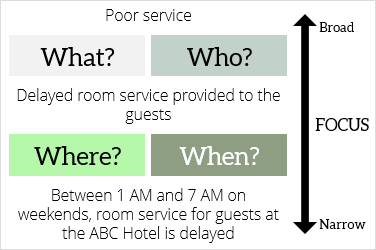

Usually, a problem statement doesn’t include the Why and How details. It mainly describes the issue, its context, and its impact without going into specific explanations of why the problem occurs or suggesting exact methods for solving it.
Moreover, 5W1H can be useful when analyzing problems and addressing their root causes. It provides a thorough understanding of the problem and prepares the way for effective solutions in later stages of the problem-solving process. However, 5W1H isn’t mainly for identifying root causes like the 5 Whys technique. It is rather a set of simple questions to broadly understand the problem, covering the overall aspects rather than deep details.
The 5W1H framework has six main components, each represented by a question word. These components include:
Other questions can be used as long as they help to reveal what is happening in the current state. For instance, it might be useful to introduce a second ‘H’ by asking ‘How much’ or ‘How many’, or to include a sixth ‘W’ by asking ‘Which’ or ‘by Whom’. Note that in the 5W2H framework (a variation of the 5W1H), an additional question is introduced to capture the “How much” or “How many” aspect.


“How much” or “How many” are used to gather quantitative information and aim to quantify aspects of the problem or situation where numerical data is relevant.
Facilitating a 5W1H Exercise
Note that there is no standardized approach when using this method, and there is no fixed sequence for asking the questions. This allows to adjust the questions to fit the specific details of the current situation or problem. The following points outline how to conduct a 5W1H exercise within a team setting:
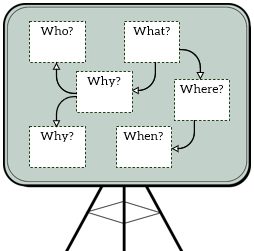
- With your team, write down the problem on a whiteboard or flipchart.
- Write down each of the 5W1H questions on a separate section.
- Facilitate a collaborative brainstorming and discuss around each of the 5W1H questions.
- Record the answers from the team in their respective sections.
- Connect related ideas across the different sections using arrows and lines.
- At the end of the exercise, use the visual representation to extract key findings and continue with your problem-solving efforts.
Example – Non-Manufacturing
The following example applies the 5W1H technique to address a problem within the hotel industry.
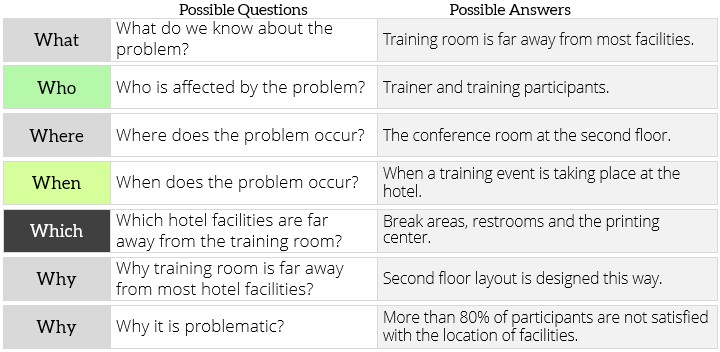
Example – Manufacturing
The following example applies the 5W1H technique to address a problem in a manufacturing environment.

Wrapping Up
In summary, the 5W1H technique is a powerful tool for problem-solving. It helps consider all aspects, organizes thoughts effectively, aids in crafting concise problem statements, and improves communication among stakeholders by reducing ambiguity. By systematically addressing the What, Who, When, Where, Why, and How, the problem-solving process becomes more efficient and effective.
References
Kubiak, T. M. (2012). The Certified Six Sigma Master Black Belt. Infotech.
Issa, A. (2016). Lean Six Sigma Program. Orange S.A.
Other Formats
Do you want to use the slides in your training courses?

5W1H Training Material – $14.85
Related Articles
Related Templates










